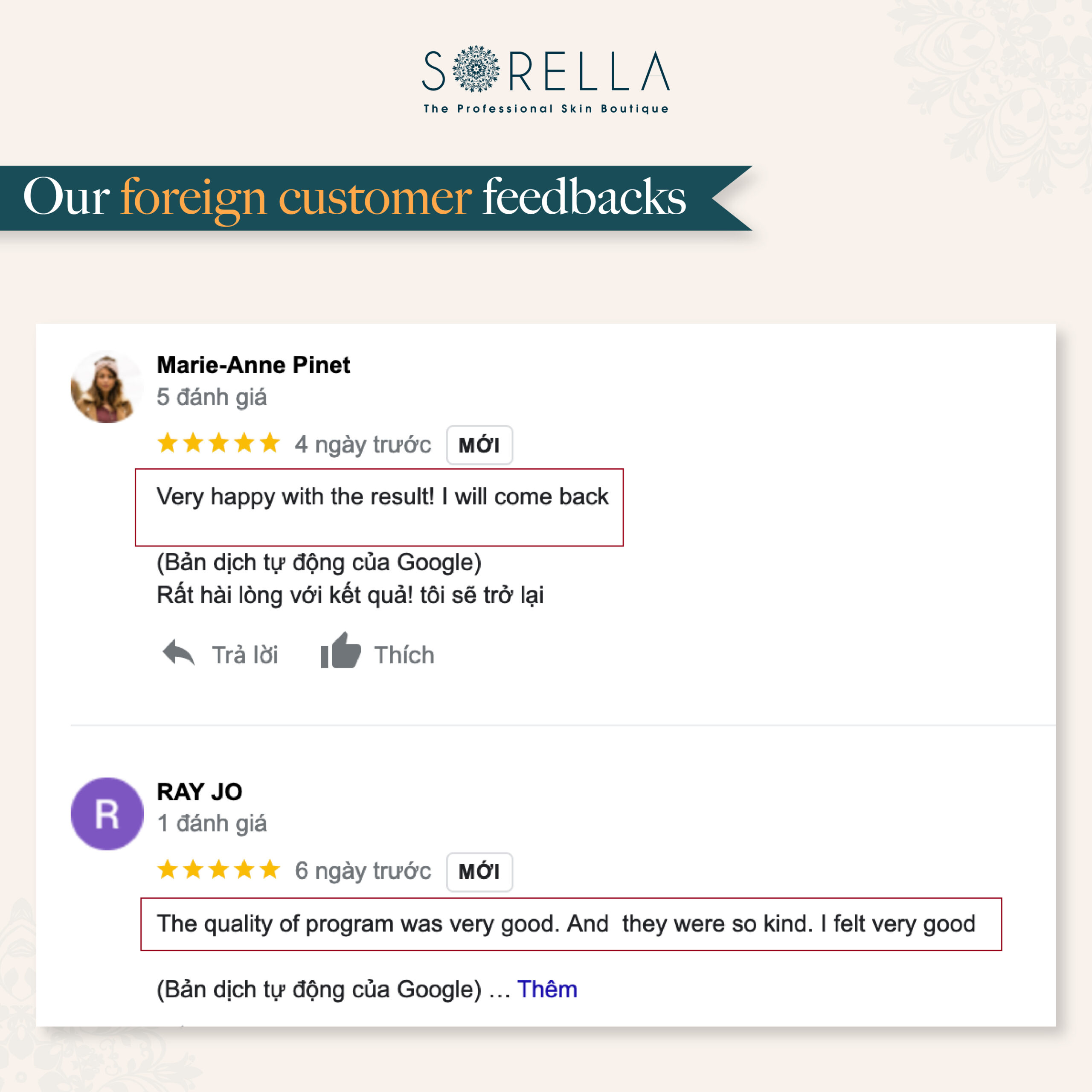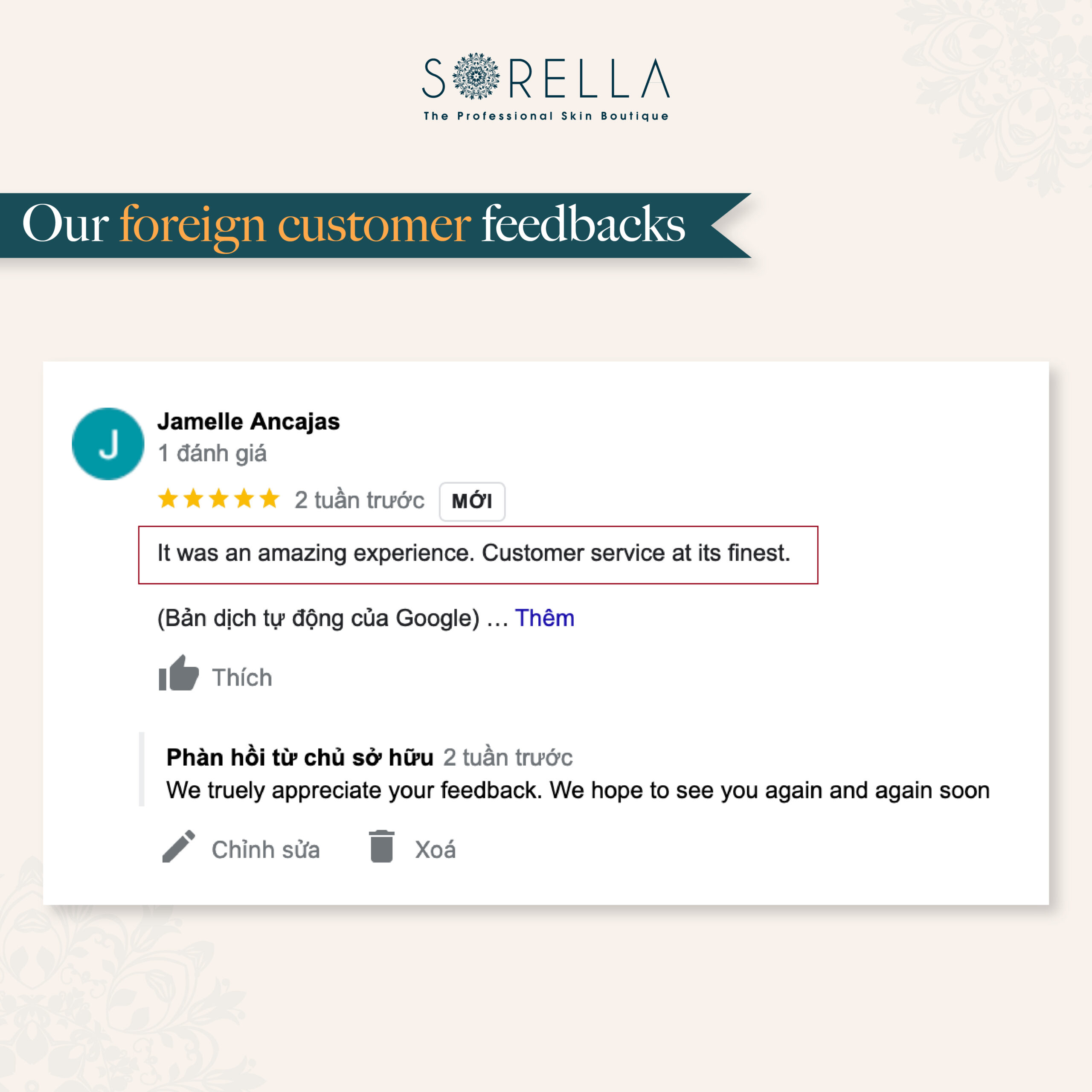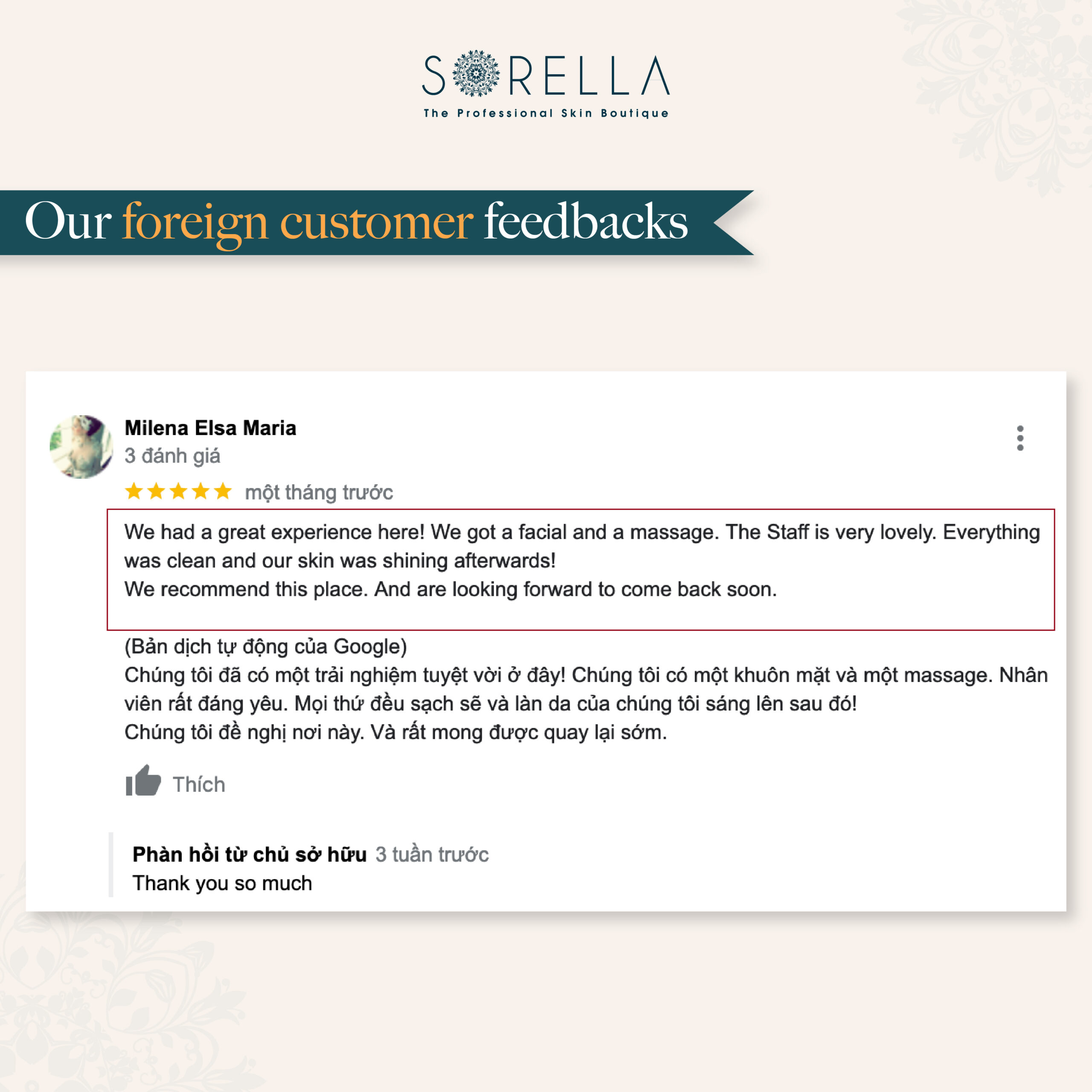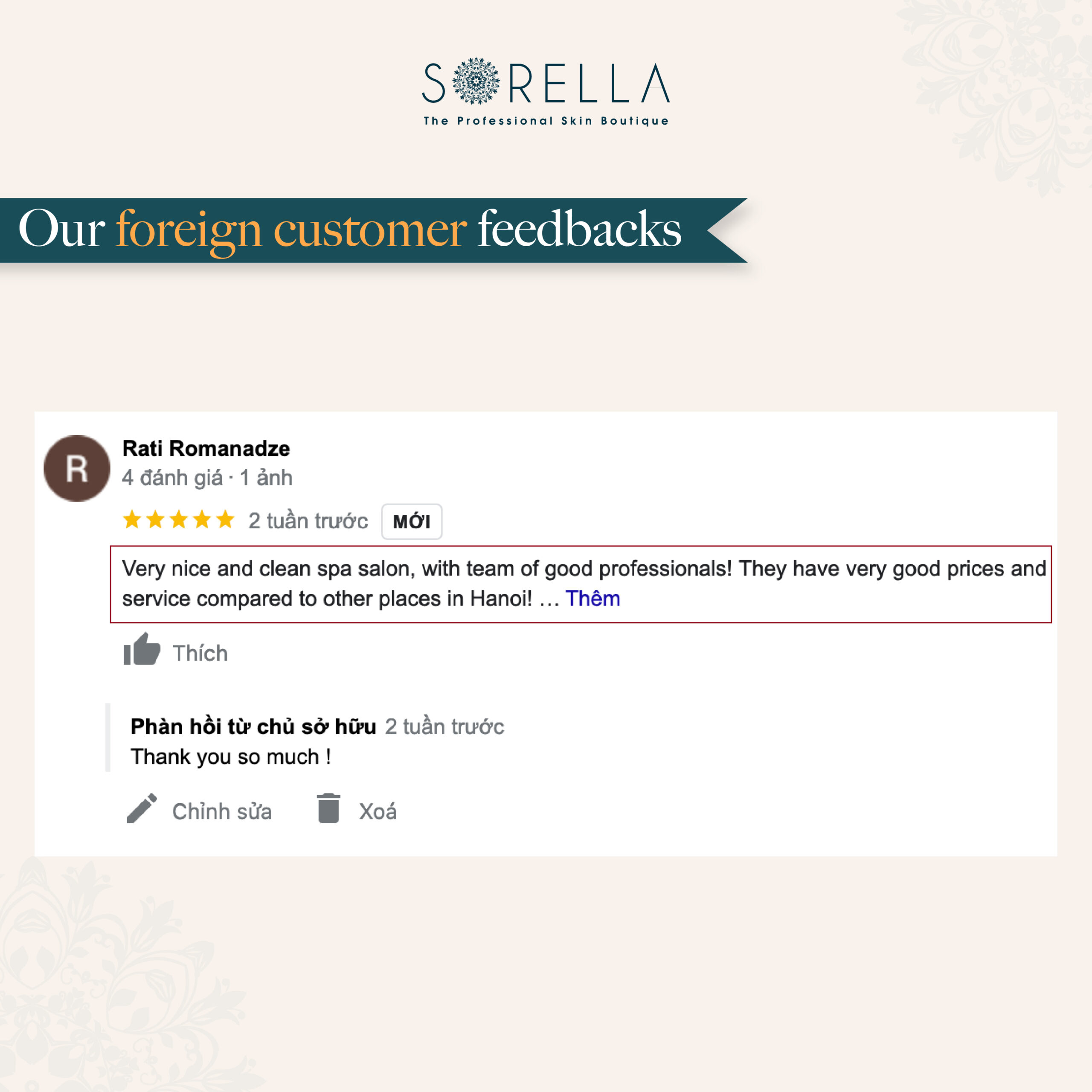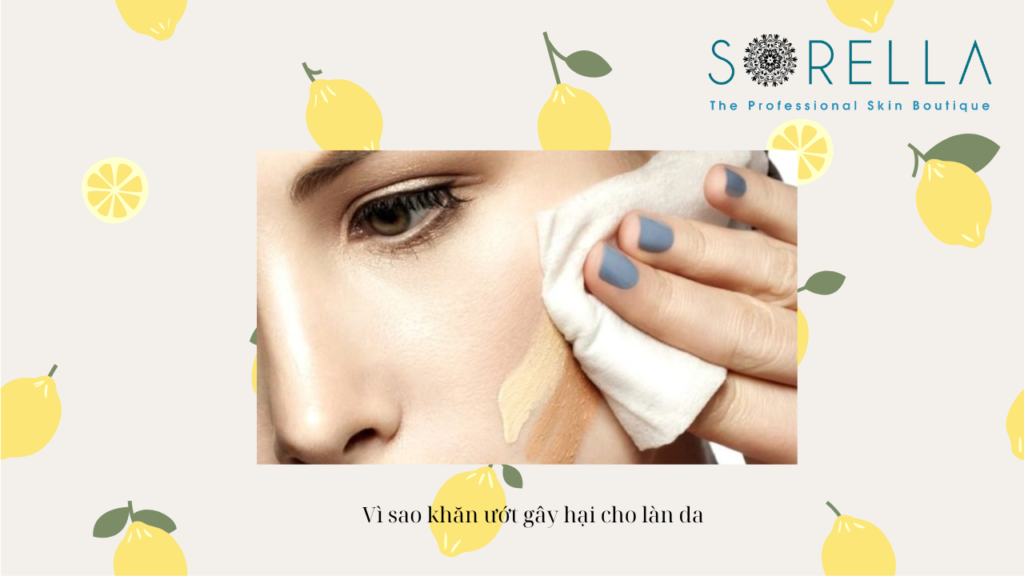Bí quyết làm đẹp
What is Nose Piercing? 5+ Things You Need to Know Before Piercing Your Nose
What is Nose Piercing? Nose piercing is currently a trend loved by many people, not only young people but also suitable for older adults. Nose piercing is popular for its fashionability, subtlety, and the ability to create a standout feature on your face. So, what is nose piercing? How long does it take for a nose piercing to heal? Let’s explore in detail with Sorella Beauty & Spa in the article below.
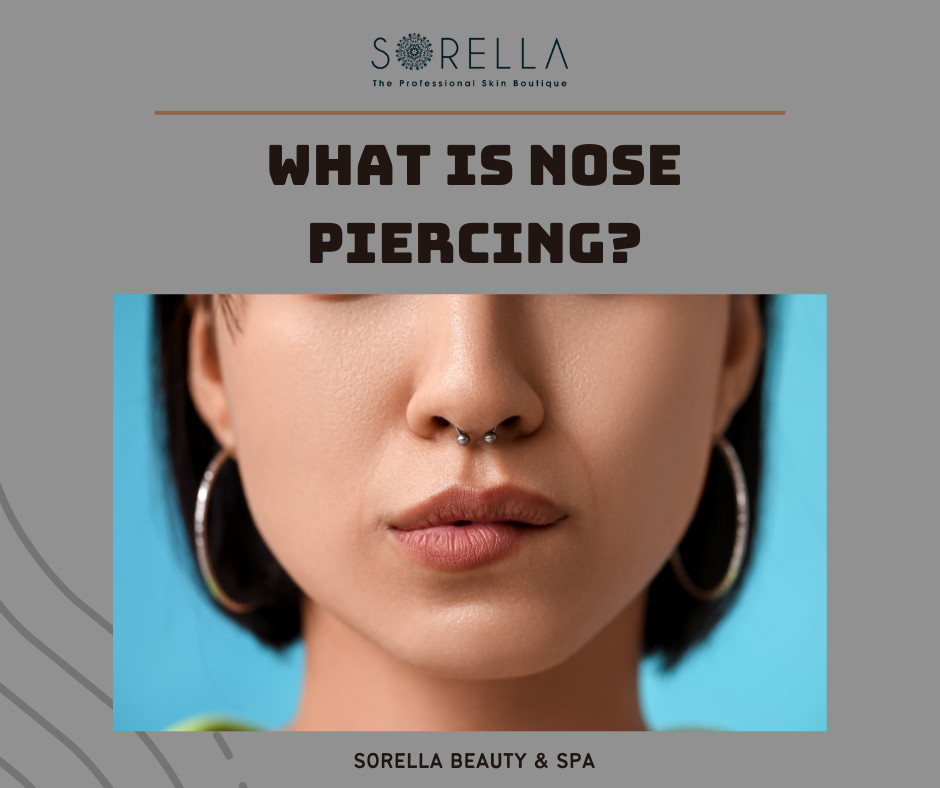
What is nose piercing? How many types of nose piercings are there?
Nose piercing is a form of body modification where a professional piercer uses a specialized needle to create a hole in the nose for wearing jewelry. This practice has been prevalent in various cultures for centuries and is now popular worldwide, not only among young people but also among older adults.
Nose piercing is admired for its aesthetic appeal, fashion statement, and the ability to add a distinct, stylish element to one’s facial appearance. There are primarily two types of nose piercings: nostril piercings and septum piercings. Nostril piercings are located on the sides of the nose and are often chosen for their subtle and elegant look, suitable for a more refined and gentle expression.
In contrast, septum piercings, which go through the nasal septum, are favored by those who prefer a bolder, more daring style. The choice of jewelry material is crucial for a safe and quick healing process, with surgical steel, titanium, gold, and silver being the most recommended options. Proper aftercare, including cleaning the piercing with saline solution and avoiding irritants, is essential to prevent infections and ensure a smooth healing process.

Is Nose Piercing Dangerous?
Is nose piercing dangerous? Nose piercing can carry certain risks and dangers, and it should be performed by experienced professionals to minimize the risk of infection and other health issues. Here are some points to consider:
- Infection: Unclean piercing procedures or using non-sterile tools can lead to infection. If not done correctly, the process of piercing can create conditions favorable for bacterial infections. Signs of infection include redness, swelling, pain, and discharge from the pierced area. In severe cases, untreated infections can lead to abscess formation or spread to other parts of the body.
- Allergic Reactions: There is a risk of allergic reactions to the metals or materials in the nose jewelry. Some people may experience significant reactions, causing swelling, pain, or severe irritation. Nickel, often used in some jewelry, is a common allergen. Choosing hypoallergenic materials such as surgical steel, titanium, or high-quality gold can help reduce the risk of allergic reactions.
- Issues with the Piercing Process: If the piercing process is not performed accurately, problems such as improper healing or painful swelling can occur. This might include the piercing being placed incorrectly, leading to discomfort or difficulty in inserting jewelry. In some cases, the piercing may close up quickly if the jewelry falls out and is not promptly replaced.
- Healing Time and Care: The healing process after piercing is crucial. Proper care and hygiene of the pierced area are essential to prevent infections and speed up healing. Typically, nostril piercings take about 2-4 months to heal, while septum piercings might heal in 6-8 weeks. During this period, it’s important to clean the piercing with a saline solution, avoid touching it with unwashed hands, and steer clear of makeup, lotions, or other products that could irritate the area.
- Risk of Bloodborne Infections: Using improperly cleaned tools or sharing piercing tools can increase the risk of HIV and other bloodborne infections. Professional piercers should always use sterilized, single-use needles and follow strict hygiene protocols to ensure safety. It’s essential to verify the piercer’s qualifications and the cleanliness of the piercing studio before proceeding with the procedure.
- Pain and Discomfort: While pain levels can vary, nose piercings typically involve a brief, sharp pain during the procedure, followed by some soreness and tenderness. Improper technique or rough handling can exacerbate discomfort and prolong the healing process. Following aftercare instructions diligently can help minimize pain and ensure a smoother recovery.
- Scarring and Keloids: Some individuals may be prone to excessive scarring or keloid formation, where the scar tissue grows excessively at the site of the piercing. This can be aesthetically displeasing and, in some cases, require medical treatment to address. Consulting with a professional piercer about your skin type and any history of keloids can help assess the risk.
- Migration and Rejection: In some cases, the body may reject the jewelry, leading to migration (where the piercing moves from its original position) or rejection (where the body pushes the jewelry out completely). This can be influenced by factors such as the placement of the piercing, the type of jewelry used, and individual skin characteristics. Choosing appropriate jewelry and monitoring the piercing closely can help mitigate these risks.
How long does it take for a nose piercing to heal?
How long does it take for a nose piercing to heal? The healing time for a nose piercing can vary based on the type of piercing and individual healing rates. Generally, a nostril piercing takes about 2 to 4 months to heal completely, although in some cases, it can take up to 6 months. During this healing period, it’s essential to follow proper aftercare instructions to ensure the piercing heals correctly and to prevent complications such as infections.

For a nostril piercing, the initial healing phase usually occurs within the first few weeks. During this time, you might experience some swelling, redness, and tenderness around the piercing site. It’s crucial to avoid touching the piercing with unwashed hands and to refrain from rotating or changing the jewelry too soon, as this can disrupt the healing process and introduce bacteria to the wound.
Cleaning the piercing with a saline solution twice a day is recommended to keep the area free from infection. Avoid using harsh chemicals or alcohol-based solutions, as they can irritate the piercing and slow down the healing process. Additionally, be cautious when applying makeup, lotions, or other skincare products near the piercing, as these can cause irritation or infection.
After the initial healing phase, the piercing will start to feel more comfortable, and the risk of infection decreases. However, it’s still essential to continue with proper aftercare until the piercing is fully healed. You may notice some crusting around the jewelry, which is a normal part of the healing process. Gently clean this with a saline solution and avoid picking at it.
Once the nostril piercing is no longer red, swollen, or discharging fluids, and it feels comfortable to the touch, you can consider changing the jewelry if desired. This usually occurs after about 2 to 4 months, but it’s always best to consult with your piercer before making any changes to ensure the piercing is fully healed.
For septum piercings, the healing time is generally quicker compared to nostril piercings. Septum piercings usually heal within 6 to 8 weeks. The healing process for a septum piercing is often less complicated because the septum has fewer blood vessels and nerve endings compared to the nostril. However, proper aftercare is still crucial to ensure a smooth healing process.
In the first few weeks after getting a septum piercing, you may experience some tenderness, swelling, and a bit of discomfort, especially when moving your nose or face. It’s important to clean the piercing with a saline solution and avoid touching or twisting the jewelry. Be gentle when blowing your nose, and avoid activities that could cause trauma to the piercing, such as contact sports.
As with nostril piercings, the healing process for a septum piercing involves the formation of a fistula, or tunnel of healed tissue, around the jewelry. This fistula needs time to strengthen and mature, so even after the initial healing period, it’s essential to continue caring for the piercing properly.
If you notice any signs of infection, such as excessive redness, swelling, pain, or discharge of pus, contact your piercer or a healthcare professional immediately. Infections can delay the healing process and cause complications if not treated promptly.
See more: What are eyelash extensions? 3+ Step-by-Step Guide to Eyelash Extensions
How Painful is a Nose Piercing?
Compared to piercings in other locations, nose piercings are considered relatively safe and less painful than expected. The healing process is also quicker and the procedure simpler compared to cartilage or belly button piercings. Nose piercing is only slightly more painful than ear piercing. However, it’s normal for your eyes to water reflexively during the piercing.
Even though it’s not very painful, you should choose a reputable piercing studio to ensure safety. Professional piercers with extensive experience can provide a smooth and pleasant experience.
See more: Should you use stem cells or collagen for the Lip Spray Process? 4 things that you should know
The healing time for an ear piercing depends on the size and location of the hole, as well as how you care for it. Generally, it takes about 4 to 8 weeks for an ear piercing to heal.
During the healing process, you should regularly clean your ear and piercing to prevent infections. Follow the manufacturer’s or professional’s guidelines to ensure safety and effectiveness.

To change your earrings, wait until the piercing has completely healed. Typically, you can change earrings after about 6-8 weeks for the initial healing and then every 4-6 weeks thereafter.
However, individual healing times can vary, so if you have any concerns or issues, consult a doctor or healthcare professional.
How to Choose Suitable Nose Jewelry? (Material, Style)
The best materials for nose jewelry are surgical steel (which is non-rusty and shiny), titanium, gold, or silver if affordable. Avoid cheap plastic or easily rusting metals, or even using sticks, as they can cause infections and damage to your nose piercing.
Choosing suitable and safe nose jewelry can help your piercing heal faster. Nose jewelry comes in various styles. For nostril piercings, a simple stud can brighten your entire face.
You can choose round studs or decorative stones for your nose.
For new piercings, choose L-shaped or curved jewelry rather than straight studs to avoid slipping and making the healing process more difficult and prone to infections.
Once fully healed, you can switch to snug-fitting rings for the nostril piercing.
For those who love the bold look of septum piercings, C-shaped rings, round rings, or bejeweled rings will give you a unique and daring appearance.
Especially, C-shaped rings for septum piercings can be hidden inside the nose when needed, making it invisible to others.
How to care for a Nose Piercing?

How to care for a nose piercing? To ensure your nose piercing heals quickly, the first and most important condition is dietary restrictions.
Avoid high-protein foods (such as beef, chicken, morning glory, seafood, sticky rice). Some piercing studios might not recommend dietary restrictions, but this is a serious mistake. Your piercing is an open wound, and consuming high-protein foods can cause the tissue to push out, resulting in pus and easily causing scars.
This basic principle is often omitted by studios to avoid scaring away potential clients with strict dietary guidelines.
Clean the piercing similarly to ear piercings. Use saline solution and small cotton swabs to remove dirt and clean the piercing. Avoid using alcohol on the wound. Be careful not to bump or touch the jewelry and piercing, and avoid getting cosmetics, chemicals, or dirty water in the piercing.
What should you avoid after getting a nose piercing?
After getting a nose piercing, it’s essential to be mindful of your diet and avoid certain foods to support the healing process and minimize the risk of irritation or infection. Here are some specific foods and beverages to avoid during the initial healing phase:
- Spicy foods can cause a burning sensation and irritate the newly pierced area, potentially leading to increased swelling and discomfort. It’s best to limit or avoid spicy foods until the piercing has healed significantly.
- Foods high in salt can exacerbate swelling and irritation around the piercing site. Reducing your intake of salty snacks and meals can help minimize these effects and promote faster healing.
- Strongly flavored foods, such as those containing garlic, onions, or heavy spices, can irritate the nose and the piercing site. Limiting these foods can help reduce the risk of inflammation and discomfort during the healing process.
- Consuming foods that are prone to contamination can increase the risk of infection. Avoid raw or undercooked foods, as well as foods that may not have been handled or prepared properly, to reduce the likelihood of introducing harmful bacteria to your system.
- Cold foods and beverages, such as ice cream or cold drinks, can cause a chilling sensation that might irritate the piercing site. It’s advisable to limit your consumption of cold items during the initial healing phase.
- Chewing hard or tough foods, like certain meats, hard nuts, or crunchy snacks, can place unnecessary pressure on the pierced area. This can cause discomfort and potentially disrupt the healing process. Opt for softer foods that are easier to chew and gentler on your nose.
- Carbonated beverages, including soda and sparkling water, can create pressure in the mouth and nose, which might affect the healing piercing. Limiting your intake of carbonated drinks can help prevent discomfort and promote better healing conditions.
By avoiding these foods and beverages, you can help ensure a smoother and more comfortable healing process for your nose piercing. Additionally, always follow the aftercare instructions provided by your piercer, which may include cleaning the piercing with saline solution and avoiding touching or twisting the jewelry. If you experience any signs of infection or unusual symptoms, seek advice from your piercer or a healthcare professional promptly.
Everyone’s healing process after getting a nose piercing can vary, so food restrictions might depend on personal reactions and experiences. If you have any questions or concerns, consult with your piercing care professional.
Tư vấn chuyên môn bài viết:
TS.BÁC SĨ NGUYỄN HỮU QUANG
Bài viết cùng chủ đề:
-
Nên lựa chọn Rejuran hay Karisma?
-
So sánh Karisma và Profhilo – 2 phương pháp trẻ hóa da tầng sâu đỉnh cao
-
Cách diệt chấy rận hiệu quả ngay tại nhà, 8 phương pháp tiêu diệt chấy rận hiệu quả
-
Có nên dùng khăn ướt để tẩy trang? Cẩn thận khi dùng khăn giấy ướt giúp chăm sóc làn da của bạn, 1 vài thành phần của giáy ướt có hại cho da


 中文 (中国)
中文 (中国) 한국어
한국어 English
English
